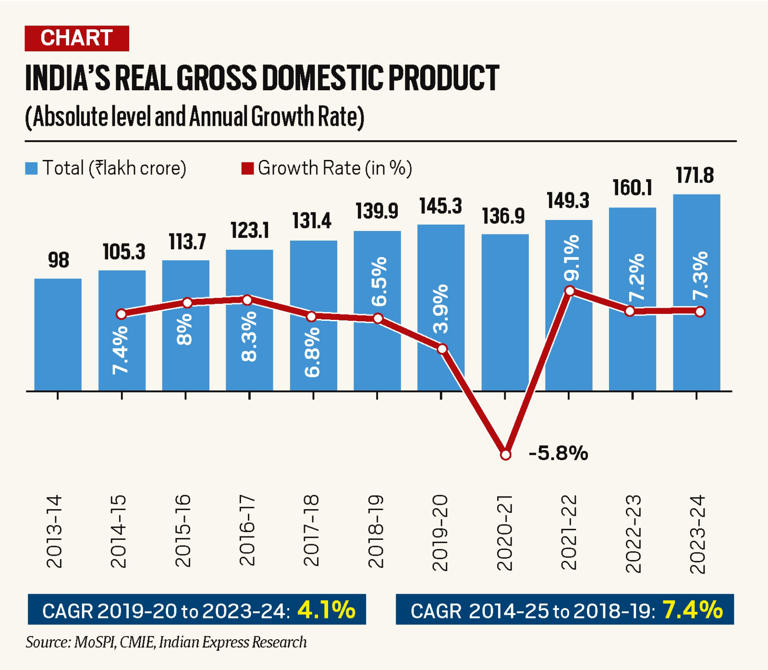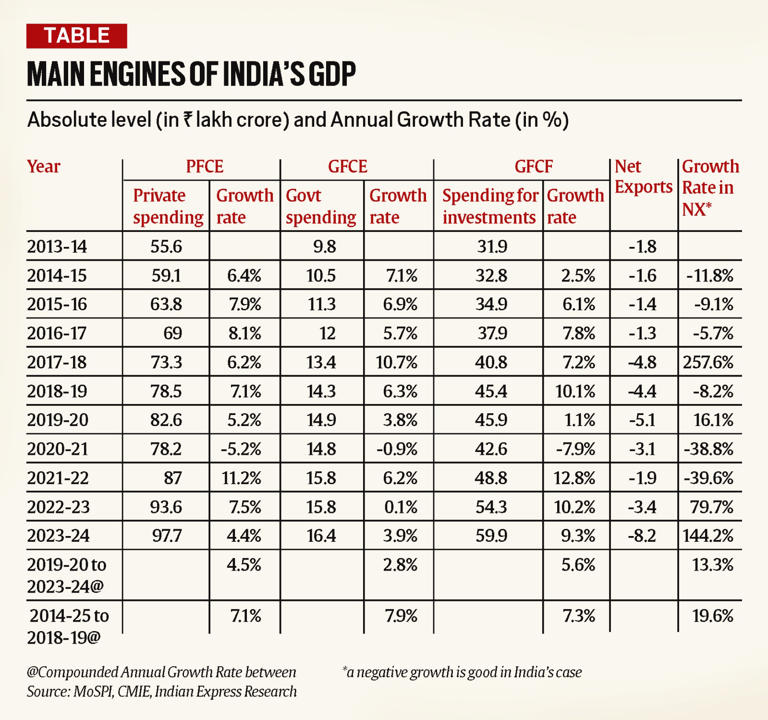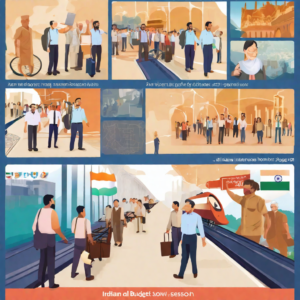By the end of March 2024, India’s GDP is expected to rise to almost Rs 172 lakh crore. When Prime Minister Modi took charge for the first time, India’s GDP was Rs 98 lakh crore, and it had reached almost Rs 140 lakh crore when he began his second term.
On an annual basis, the 7.3% growth rate estimated for 2023-24 presents a substantial and pleasant upside surprise. Most observers, including the Reserve Bank of India, had expected growth to decelerate in the current financial year to somewhere between 5.5% and 6.5%. That the GDP growth rate is now expected to beat even the higher estimate by almost a percentage point underscores the strength of India’s economic recovery.

India’s GDP is calculated by adding up all kinds of spending in the economy — the demand side of the economy. As such, there are four main “engines” of GDP growth.

PFCE (Private Final Consumption Expenditure)
It accounts for almost 60% of India’s GDP.
In the current year, the overall demand by people is expected to grow by 4.4%. This is similar to the CAGR (4.5%) in the second term of the Modi government but is substantially lower than the growth rate in the first term (7.1%).
Muted private consumption is made worse by growing inequality — consumption in some parts of the economy (say, the urban rich) has grown quite fast while large sections of the economy (especially rural India) haven’t yet recovered enough. While people should not consume more than their income, the muted performance of the biggest engine of growth is a matter of concern.
GFCF (Gross Fixed Capital Formation)
It accounts for 30% of the GDP. This one has 9.3% growth rate for fixed capital formation. Spending towards investments in boosting the productive capacity of the economy like the building of a factory, companies buying computers for their offices, or governments building roads.
GFCE (Govt. Final Consumption Expenditure)
It is accounting for around 10% of GDP. Spending by governments to meet daily expenditures such as salaries. This is a3.9% increase over the previous year.
Net Exports
India typically imports more than it exports, this engine drags down GDP calculations. This is almost down by 8.2%
Overall, a muted private consumption, Increased Government spending both for capital formation and Govmt consumption means a cautious outlook for the economy with a healthy growth rate. Declining exports are a concern and increasing focus on export-oriented business will be a game changer and differentiator for 2024-2025.
Article Source: First Advance Estimates of India’s GDP out: What are they, and what do the data show? (msn.com)



